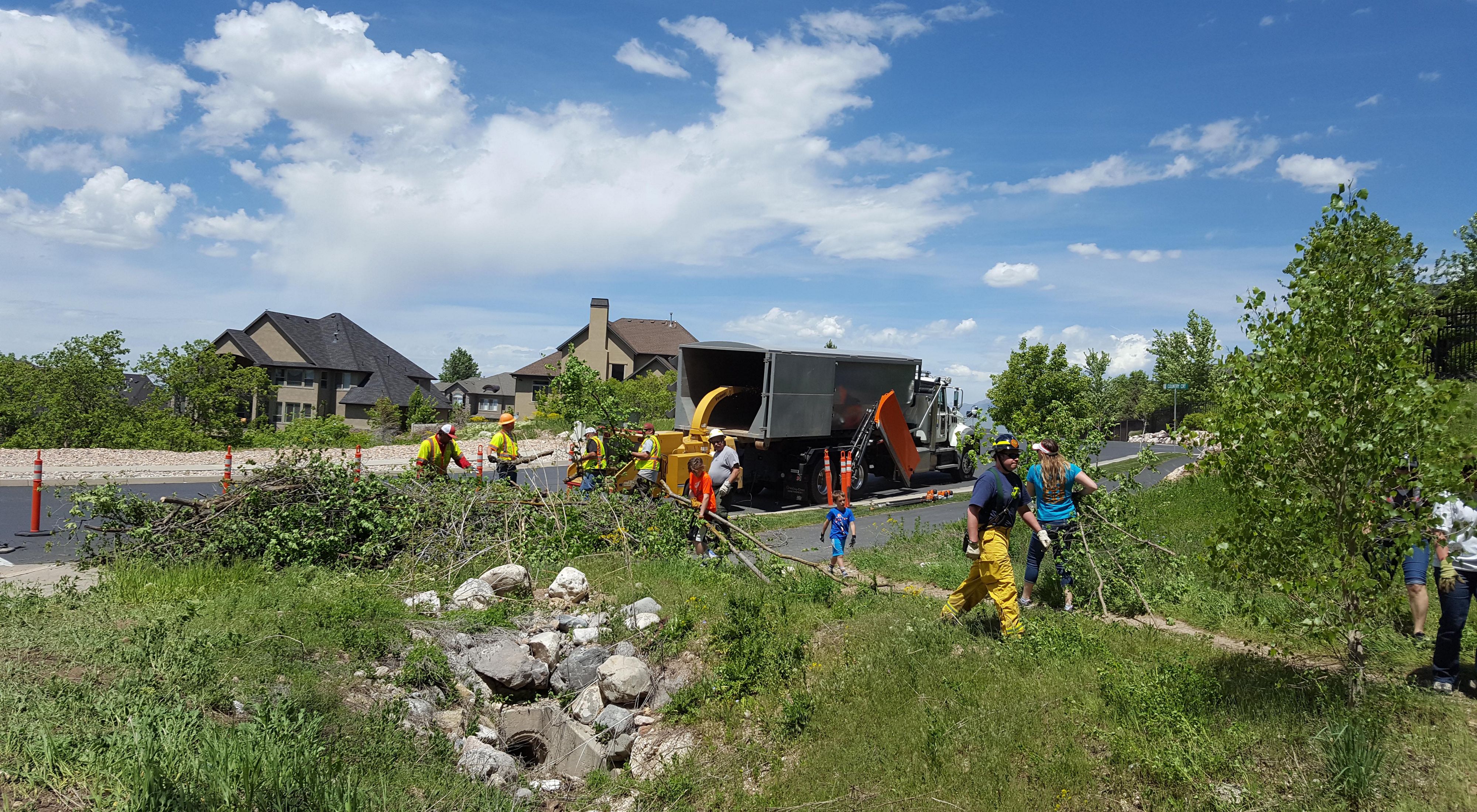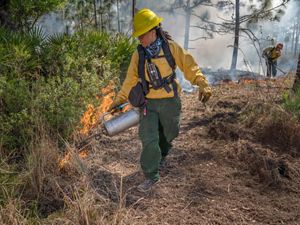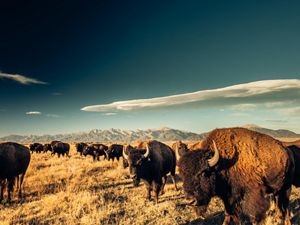Media Contacts
-
Jay Lee
The Nature Conservancy
Phone: 301-640-1615
Email: jay.lee@TNC.ORG
The Nature Conservancy commends the announcement by Agriculture Secretary Tom Vilsack of a new $1 billion Community Wildfire Defense Grant program. Launched on July 26, 2022, the five-year, competitive program funded by the bipartisan Infrastructure Investments and Jobs Act is designed to assist at-risk communities, including Tribal communities, non-profit organizations, state forestry agencies and Alaska Native corporations with planning for and mitigating wildfire risks. According to the USDA, the program launch comes at an important time as shifting development patterns, land and fire management decisions, and climate change have turned fire “seasons” into fire “years” with increasingly destructive fires.
“Secretary Vilsack and the Biden Administration are to be commended for committing resources to wildfire resilience, and in particular structuring a grants program that will serve at-risk communities,” said Marek Smith, director of The Nature Conservancy’s North America Fire Program. “Successful wildfire adaptation efforts are grounded in communities. These resources will provide support desperately needed for doing the hard work of living more safely with wildfire.”
Quote: Marek Smith
These resources will provide support desperately needed for doing the hard work of living more safely with wildfire.
A 2021 wildfire resilience funding report by The Nature Conservancy identified a minimum investment of approximately $5 billion to $6 billion per year over the next 10 years for the highest priority work to reduce wildfire risks across federal, tribal, state and private land ownerships, and for community and infrastructure investments. The IIJA funds are a good down payment on meeting the needs but strengthening relationships with communities and building equitable partnerships will make the most of available resources.
The intensity and scope of recent fires in New Mexico, California and Texas have exposed ecological, social and land management vulnerabilities. After the fires have been contained, remediation and recovery work will continue for years. Rectifying a century of forest management practices must be met with reimagining and rebuilding relationships with diverse communities.
“TNC will support its many partners and the rights of tribes in accessing federal resources to better prepare communities for wildfire and support resilient, fire-adapted ecosystems,” said Smith.
The Nature Conservancy is a global conservation organization dedicated to conserving the lands and waters on which all life depends. Guided by science, we create innovative, on-the-ground solutions to our world’s toughest challenges so that nature and people can thrive together. We are tackling climate change, conserving lands, waters and oceans at an unprecedented scale, providing food and water sustainably and helping make cities more sustainable. The Nature Conservancy is working to make a lasting difference around the world in 77 countries and territories (41 by direct conservation impact and 36 through partners) through a collaborative approach that engages local communities, governments, the private sector, and other partners. To learn more, visit nature.org or follow @nature_press on X.



